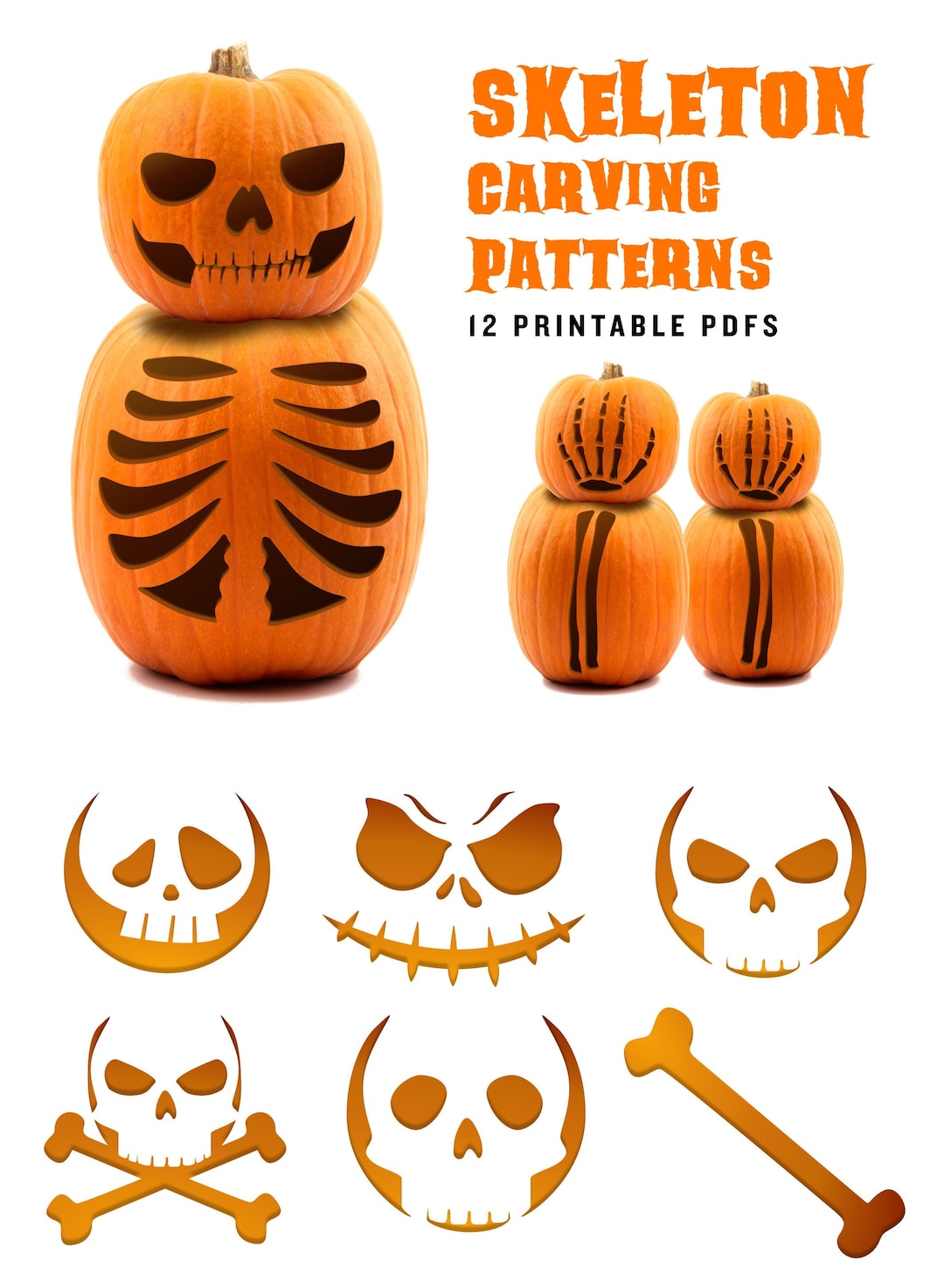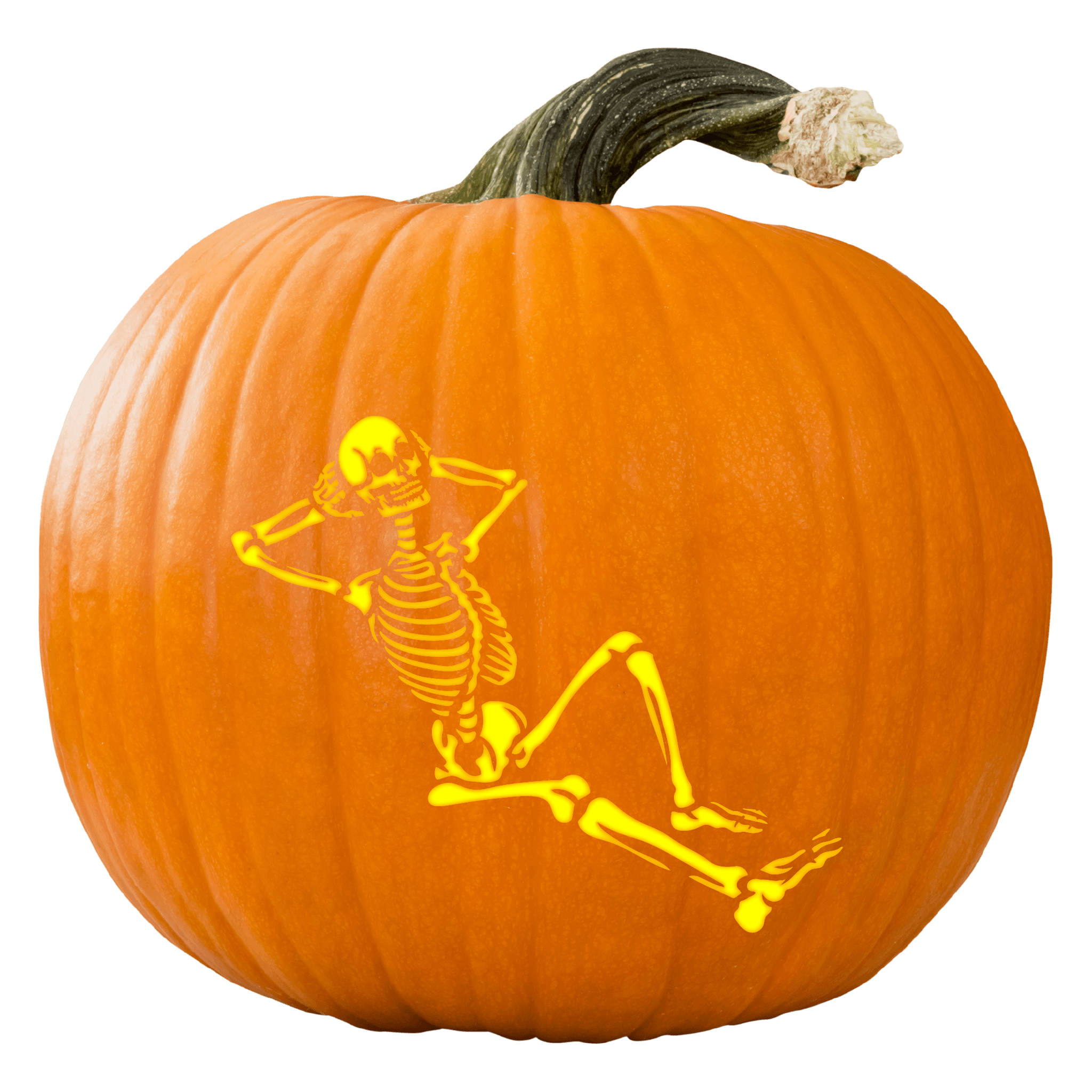Skeleton And Pumpkin: A Unique Duo In Art, Culture, And Tradition
Skeleton and pumpkin are two symbols that, when combined, evoke a sense of mystery, creativity, and cultural significance. These seemingly unrelated elements have found their way into art, folklore, and celebrations worldwide. Whether it’s the vibrant traditions of Day of the Dead or the spooky charm of Halloween, the pairing of skeletons and pumpkins has become a powerful visual language.
The relationship between skeleton and pumpkin is not just about aesthetics; it represents deeper themes such as life, death, and renewal. This article explores how this duo has permeated various aspects of human culture, from ancient rituals to modern pop culture. By understanding their origins and meanings, we can appreciate why they continue to captivate audiences today.
From decorative displays to literary symbolism, skeleton and pumpkin are versatile icons that inspire creativity and provoke thought. Whether you're an artist, historian, or simply someone curious about cultural phenomena, this article will provide a comprehensive look into their significance and enduring appeal.
Read also:Clarins Instant Light Lip Comfort Oil Review A Comprehensive Guide To Ultimate Lip Care
Table of Contents
- The Origin of Skeleton and Pumpkin
- Skeleton and Pumpkin in Halloween
- Skeleton and Pumpkin in Day of the Dead
- Skeleton and Pumpkin in Art
- Skeleton and Pumpkin in Literature
- Skeleton and Pumpkin in Film and Animation
- Skeleton and Pumpkin in Fashion
- DIY Skeleton and Pumpkin Crafts
- Symbolism of Skeleton and Pumpkin
- The Future of Skeleton and Pumpkin
The Origin of Skeleton and Pumpkin
The connection between skeleton and pumpkin dates back centuries, rooted in ancient traditions and agricultural practices. Pumpkins, originally cultivated in Central America, were revered for their nourishing properties and symbolic representation of harvest. Meanwhile, skeletons have long been associated with mortality and spiritual beliefs across cultures.
One of the earliest documented uses of skeleton imagery alongside pumpkins comes from pre-Columbian civilizations. These cultures used skulls and bones in ceremonies to honor ancestors, often decorating them with natural elements like gourds and squash. Over time, this tradition evolved, blending with European customs brought by settlers and missionaries.
In modern times, the pairing of skeleton and pumpkin has become synonymous with festivals like Halloween and Day of the Dead. These celebrations highlight the universal human fascination with life cycles and the afterlife, making this duo a timeless symbol of cultural heritage.
Ancient Roots of the Symbolism
Archaeological evidence suggests that ancient societies viewed both skeletons and pumpkins as metaphors for life and death. For instance:
- Skeletons were often used in burial rites to represent the transition from life to the afterlife.
- Pumpkins, with their vibrant orange color and bountiful seeds, symbolized fertility and abundance.
These dual meanings created a powerful synergy, which persists in contemporary interpretations of skeleton and pumpkin.
Skeleton and Pumpkin in Halloween
Halloween, one of the most popular celebrations worldwide, prominently features skeleton and pumpkin motifs. The jack-o'-lantern, a carved pumpkin with a flickering candle inside, serves as a central icon of the holiday. Paired with spooky skeleton decorations, these elements create an atmosphere of mystery and fun.
Read also:Hottest News Anchors The Faces That Keep Us Informed
Historically, the practice of carving pumpkins originated in Ireland, where people carved turnips to ward off evil spirits. When Irish immigrants arrived in America, they discovered pumpkins were more abundant and easier to carve, leading to the tradition we know today.
Skeletons, on the other hand, represent the ghostly and supernatural aspects of Halloween. Together, skeleton and pumpkin form the foundation of this festive season, inviting people of all ages to embrace creativity and imagination.
Halloween Traditions Around the World
While Halloween is most commonly associated with the United States, similar traditions exist globally:
- In Mexico, Dia de los Muertos incorporates skeleton imagery to celebrate deceased loved ones.
- In Europe, Samhain, an ancient Celtic festival, uses bonfires and carved gourds to mark the end of harvest season.
- In Asia, festivals like Obon in Japan incorporate lanterns and ancestral offerings, echoing the themes of skeleton and pumpkin.
These cross-cultural connections demonstrate the universal appeal of these symbols.
Skeleton and Pumpkin in Day of the Dead
In Mexican culture, the Day of the Dead (Día de los Muertos) celebrates the lives of deceased family members through vibrant rituals and artistic expressions. Skeletons, depicted as cheerful "calaveras," play a central role in this celebration, symbolizing the cycle of life and death. Pumpkins, though less prominent, are sometimes incorporated into altars and offerings.
The fusion of skeleton and pumpkin in Day of the Dead reflects a deeper understanding of mortality and renewal. Calaveras adorned with flowers and colorful designs convey joy and remembrance, while pumpkins represent the harvest season and the abundance of life.
This unique cultural blend showcases how skeleton and pumpkin can coexist harmoniously, transcending their traditional spooky connotations.
Artistic Expressions in Day of the Dead
Artists often incorporate skeleton and pumpkin motifs into their works during Day of the Dead celebrations:
- Traditional sugar skulls feature intricate designs inspired by pumpkins.
- Paper mache sculptures combine skeletal figures with floral patterns and pumpkin shapes.
- Modern digital art reinterprets these symbols for new audiences.
These creative interpretations keep the spirit of Day of the Dead alive, while honoring its rich history.
Skeleton and Pumpkin in Art
Throughout history, artists have been drawn to the dramatic contrast of skeleton and pumpkin. From classical paintings to contemporary installations, these elements offer endless possibilities for creative expression. Their juxtaposition challenges viewers to confront themes of life, death, and transformation.
For example, surrealist artists like Salvador Dalí frequently used skeleton imagery to explore the subconscious mind. Meanwhile, folk artists in Latin America craft vibrant ceramic sculptures featuring skeletons surrounded by pumpkins and other natural elements.
In recent years, digital artists have embraced skeleton and pumpkin motifs, creating stunning visuals that blend tradition with technology.
Artistic Styles Featuring Skeleton and Pumpkin
Here are some notable styles that incorporate skeleton and pumpkin:
- Surrealism: Combines dreamlike imagery with skeletal forms.
- Folk Art: Uses bright colors and patterns to celebrate cultural heritage.
- Contemporary Art: Explores modern interpretations through mixed media.
Each style brings its own perspective to the timeless pairing of skeleton and pumpkin.
Skeleton and Pumpkin in Literature
Literature has long embraced the symbolism of skeleton and pumpkin, using them to explore complex themes. From classic tales to modern novels, these elements add depth and intrigue to storytelling. Writers often employ skeleton imagery to represent mortality, while pumpkins symbolize growth and transformation.
For instance, Washington Irving's "The Legend of Sleepy Hollow" features a headless horseman chasing Ichabod Crane, blending skeleton imagery with eerie forest settings. Similarly, Roald Dahl's "Revolting Rhymes" reimagines classic fairy tales with unexpected twists involving skeletons and pumpkins.
In contemporary literature, authors continue to experiment with these symbols, creating fresh narratives that resonate with readers.
Examples of Skeleton and Pumpkin in Literature
Consider these literary examples:
- "The Graveyard Book" by Neil Gaiman uses skeletons to explore themes of identity and belonging.
- "Pumpkin Eater" by Marge Piercy employs pumpkin imagery to address issues of femininity and empowerment.
These works demonstrate the versatility of skeleton and pumpkin in literary contexts.
Skeleton and Pumpkin in Film and Animation
Cinema and animation have embraced skeleton and pumpkin motifs, bringing them to life in visually stunning ways. Films like Tim Burton's "The Nightmare Before Christmas" showcase the whimsical side of these symbols, while horror movies emphasize their darker undertones.
Animation studios such as Pixar and Studio Ghibli have also explored skeleton and pumpkin themes, creating memorable characters and settings that captivate audiences. Through innovative storytelling and cutting-edge technology, filmmakers continue to push the boundaries of what skeleton and pumpkin can represent.
As the film industry evolves, so too does the portrayal of these iconic symbols, ensuring their relevance in an ever-changing world.
Notable Movies Featuring Skeleton and Pumpkin
Here are some films that highlight skeleton and pumpkin:
- "The Nightmare Before Christmas" – A stop-motion masterpiece featuring Jack Skellington and his pumpkin kingdom.
- "Corpse Bride" – Another Tim Burton creation that explores themes of life and death through skeleton characters.
These films exemplify the creative potential of skeleton and pumpkin in visual media.
Skeleton and Pumpkin in Fashion
Fashion designers frequently incorporate skeleton and pumpkin motifs into their collections, appealing to consumers who appreciate bold and expressive styles. From haute couture to streetwear, these symbols add flair and personality to clothing and accessories.
For example, Alexander McQueen's designs often feature skeletal elements, while Moschino's collections celebrate the whimsy of pumpkins. These contrasting approaches demonstrate the versatility of skeleton and pumpkin in fashion.
As seasonal trends emerge, skeleton and pumpkin patterns become especially popular during fall and winter months, aligning with holidays like Halloween and Thanksgiving.
Fashion Designers Who Love Skeleton and Pumpkin
Some notable designers include:
- Alexander McQueen – Known for dark, edgy designs featuring skeletal themes.
- Moschino – Celebrates playful pumpkin motifs in colorful, whimsical creations.
These designers prove that skeleton and pumpkin can transcend traditional boundaries, influencing fashion across various demographics.
DIY Skeleton and Pumpkin Crafts
For those who enjoy hands-on activities, creating skeleton and pumpkin crafts can be a rewarding experience. Whether you're a seasoned crafter or a beginner, there are countless projects to explore. From simple paper cutouts to elaborate 3D sculptures, these crafts allow for endless creativity.
Materials like cardboard, clay, and fabric can be transformed into stunning skeleton and pumpkin creations. Online tutorials and craft stores provide resources for inspiration and supplies, making it easier than ever to bring these symbols to life.
Engaging in DIY projects not only fosters creativity but also strengthens community bonds, as people gather to share ideas and techniques.
Popular DIY Projects for Skeleton and Pumpkin
Consider these ideas:
- Cardboard skeleton puppets paired with mini pumpkin lanterns.
- Clay sculptures of skeleton figures holding carved pumpkins.
These projects offer fun and educational opportunities for individuals and groups alike.
Symbolism of Skeleton and Pumpkin
At their core, skeleton and pumpkin represent fundamental aspects of human existence: life, death, and renewal. Skeletons remind us of our mortality, while pumpkins symbolize growth and abundance. Together, they create a powerful metaphor for the cyclical nature of life.
Cultural interpretations vary, but the underlying themes remain consistent. In some traditions, skeleton and pumpkin serve as reminders to cherish the present moment. In others, they encourage reflection on the past and hope for the future.
Understanding the symbolism of skeleton and pumpkin enriches our appreciation for the traditions and art forms that celebrate them.
Cultural Interpretations of Skeleton and Pumpkin
Different cultures interpret skeleton and pumpkin in unique ways:
- In Mexican culture, they symbolize remembrance and celebration of ancestors.
- In American culture, they evoke festive joy and creativity during Halloween.
These diverse interpretations highlight the universal appeal of skeleton and pumpkin.
The Future of Skeleton and Pumpkin
As society continues to evolve, so too will the portrayal of skeleton and pumpkin. Emerging technologies like virtual reality and augmented reality offer new platforms for exploring these symbols. Artists, writers, and filmmakers will undoubtedly find innovative ways to incorporate skeleton and pumpkin into their work, ensuring their relevance for generations to come.
Moreover, global connectivity allows for greater cultural exchange, enabling people worldwide to appreciate the shared significance of skeleton and pumpkin. This cross-cultural understanding fosters creativity and collaboration, paving the way for exciting developments in art, literature, and beyond.


